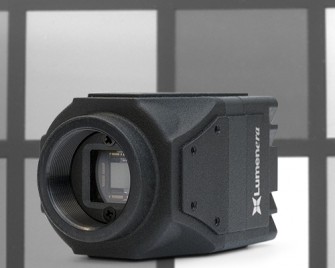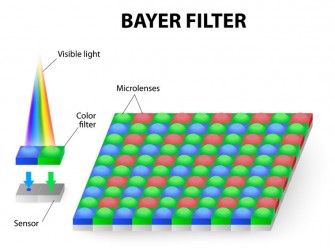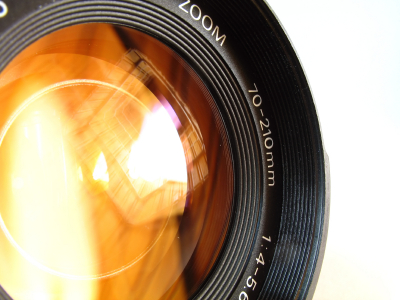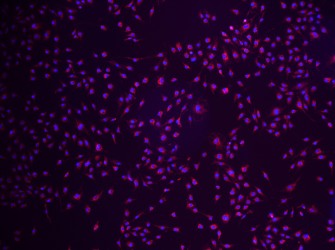Lumenera Blog

Why Deterministic Triggering is Important for Time Sensitive Applications
Capturing an event at the right moment is what makes an image so valuable. Whether it’s a photo of a car running a red light or a snapshot of an item to be inspected on an assembly line, timing is everything. In order to ensure that an event is captured at the appropriate time (within microseconds), a camera’s ability to deterministically trigger is vital.

When Monochrome Cameras are the Best Solution
Monochrome cameras can easily be overlooked when searching for an imaging solution since many new cameras boast vivid color, sharp contrast, and improved low light performance. There are many applications, however, that would benefit from using a monochrome camera as they produce sharper images with better resolution, output smaller file sizes, and are more sensitive to light.

Capturing Accurate Color Through Demosaicing
Capturing true and accurate color has always been one of the biggest challenges in digital imaging. Since monochrome sensors can only measure the intensity of light and are agnostic to its color, a method was devised to measure the intensity of a specific color of light over each pixel. This method involves placing small filters of alternating color over each pixel using a Bayer pattern.

USB Turns 20
Twenty years ago seven technology companies came together to simplify and unify the connectors found on personal computers. They wanted to create a new connector type that was simple, fast, and most of all, universal. In January 1996, the first official iteration of the Universal Serial Bus, USB 1.0, was born.

The Best of Both Worlds: Sony’s New CMOS Sensors
Sony has recently introduced their latest global shutter CMOS sensors that are capable of producing CCD-like performance. Historically, CCD sensors have been known to be far superior to CMOS technology, boasting higher dynamic range, higher pixel density, and better color representation than their CMOS counterparts. CMOS imagers, however, are typically much less expensive to manufacture and require less power to operate. Sony’s latest Pregius global shutter CMOS sensors combine beneficial aspects of both CCD and CMOS in a pixel design resulting in impressive performance.

Avoiding Optical Low Pass Filters in Your Camera
Optical Low Pass filters are present in the vast majority of digital cameras sold within the consumer market. Their purpose is to reduce or remove possible Moiré effect when capturing fixed details such as clothing with repetitive patterns, or an urban landscape where a number of horizontal or vertical lines are present, such as office building windows.

Imaging in Life Science: Automated Cell Counters
Growing cells in culture dishes or flasks has been in practice for many decades. Traditionally samples from these flasks are collected on a regular basis to determine, among other things, their density and viability. Along with visual inspection of the flasks under a microscope, it was common practice to determine both density and viability using an instrument called a haemocytometer. This manual method was accurate but it had its disadvantages. Continually cleaning, counting and manually logging data was a tedious process. Furthermore, there were biohazard considerations to take into account when carrying out this manual process.

BioBus Mobile Laboratory: Inspiring the Next Generation of Scientists
At the beginning of October, we announced our partnership with BioBus, a mobile laboratory for students based in New York City. The BioBus, a 1974 transit bus, is equipped with over $150,000 worth of research-grade microscopes and staffed by PhD scientists. Its mission? To bring an accessible, immersive, and hands-on laboratory environment to students and the general public, offering them the opportunity to participate in the power and beauty of scientific discovery.

The Camera: One of the Most Important Components on an Unmanned Aerial Vehicle (UAV)
The Unmanned Aerial Vehicle (UAV) market is a wide and increasingly prevalent industry in today’s technologically advanced world. There are over 400 UAV manufacturers worldwide, ranging from low-end consumer products (think Amazon drones) to high-end commercial and military applications. Indeed, UAVs are progressively replacing the use of manned aircrafts and satellites for reasons such as safety, performance, and cost.

Imaging in its Purest Form: Why Industrial-Grade Camera Images Outperform Consumer-Grade Camera Images
Over the last decade, consumer cameras have improved dramatically. Images taken with today’s latest DSLRs, Point and Shoot cameras and even smartphones are incredibly impressive. Decades worth of R&D have contributed to improvements in speed, low-light performance, resolution and color accuracy. Capturing a stunning landscape, macro, or portrait image can easily be done by any modern low-cost camera available today. With all the improvements in consumer-grade cameras, one wonders if architects developing industrial vision systems should consider using them as their camera solution. Let’s take a step back to examine what makes these images look good and what the vision system is looking to accomplish.

